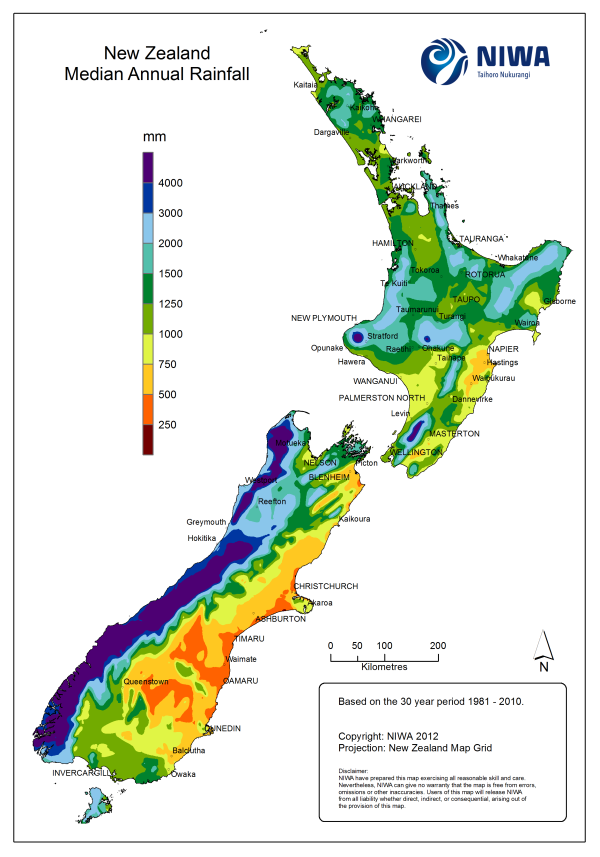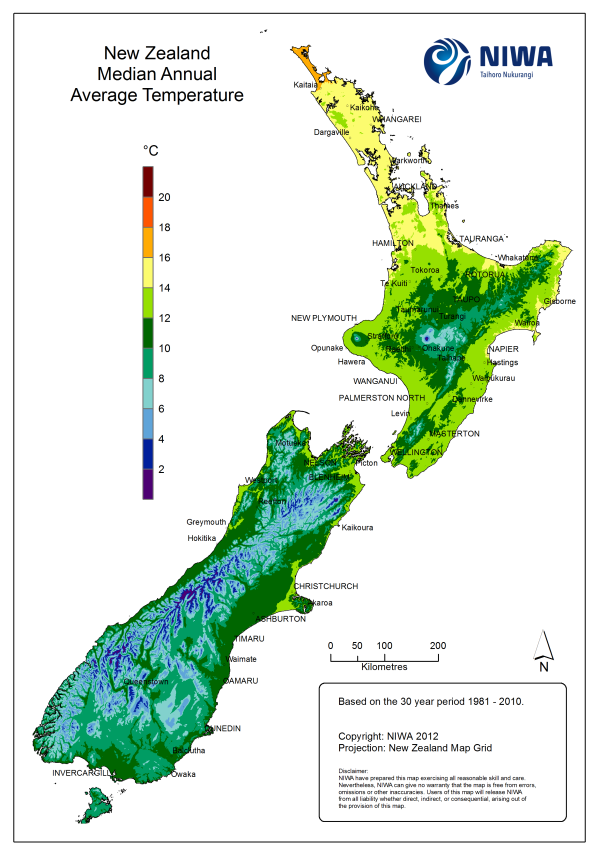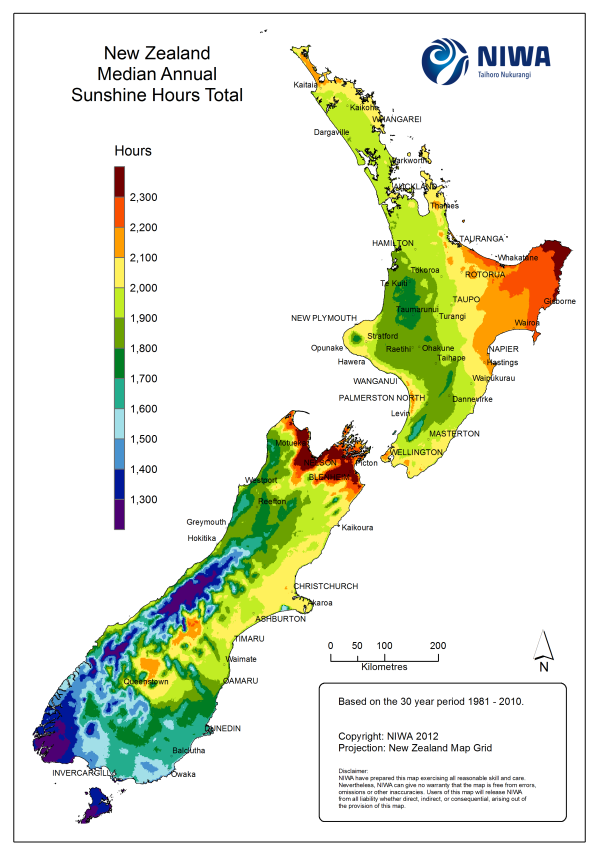New Zealand's climate is complex and varies from warm subtropical in the far north to cool temperate climates in the far south, with severe alpine conditions in the mountainous areas.
Mountain chains extending the length of New Zealand provide a barrier for the prevailing westerly winds, dividing the country into dramatically different climate regions. The West Coast of the South Island is the wettest area of New Zealand, whereas the area to the east of the mountains, just over 100 km away, is the driest.
Most areas of New Zealand have between 600 and 1600 mm of rainfall, spread throughout the year with a dry period during the summer. Over the northern and central areas of New Zealand more rainfall falls in winter than in summer, whereas for much of the southern part of New Zealand, winter is the season of least rainfall.
Mean annual temperatures range from 10°C in the south to 16°C in the north of New Zealand. The coldest month is usually July and the warmest month is usually January or February. In New Zealand generally there are relatively small variations between summer and winter temperatures, although inland and to the east of the ranges the variation is greater (up to 14°C). Temperatures also drop about 0.7°C for every 100 m of altitude.
Sunshine hours are relatively high in areas that are sheltered from the west and most of New Zealand would have at least 2000 hours annually. The midday summer solar radiation index (UVI) is often very high in most places and can be extreme in northern New Zealand and in mountainous areas. Autumn and spring UVI values can be high in most areas.
Most snow in New Zealand falls in the mountain areas. Snow rarely falls in the coastal areas of the North Island and west of the South Island, although the east and south of the South Island may experience some snow in winter. Frosts can occur anywhere in New Zealand and usually form on cold nights with clear skies and little wind.
Climate zones
To summarise the climate of New Zealand, selected locations throughout the country have been grouped into broad climate zones. A brief description of each climate zone illustrating the average rainfall and temperature can be reached by clicking on the links below:
The data are monthly averages for the period 1971–2000, for locations with at least 5 years of complete data.
Station details of each location
Similar scales have been used for each graph to allow comparison between locations.
Climate data
We also provide downloadable files for monthly and annual rain, temperature, sunshine, frost and wind data for selected locations throughout New Zealand. Actual data recorded at Reefton can be accessed for use in statistical analyses (see NIWA DataHub).




